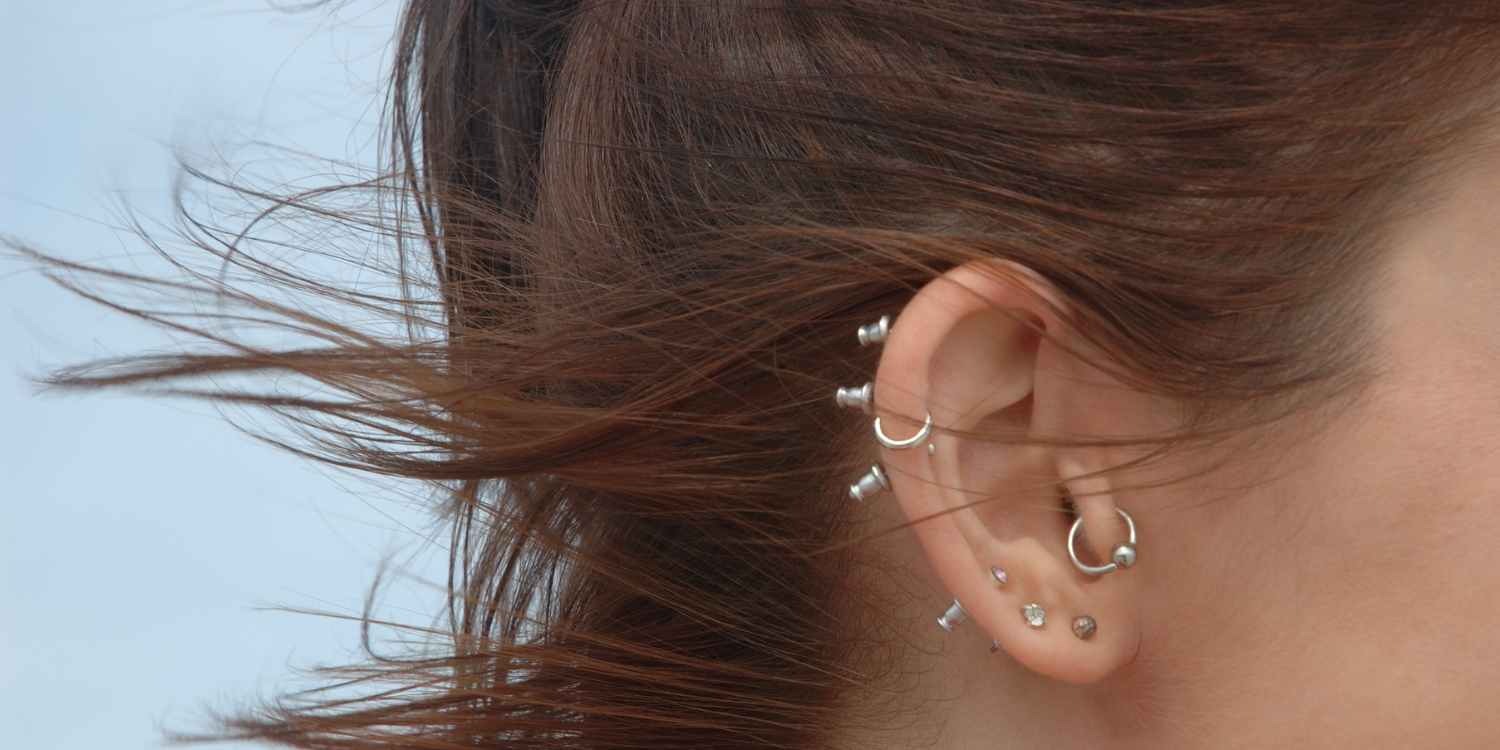A Comprehensive Guide to Daith Piercing
Daith piercing is a type of ear piercing that is gaining popularity for its unique placement and potential health benefits. This piercing is located in the innermost part of the ear, passing through the cartilage of the ear’s ridge. The name “daith” comes from the Hebrew word for “door,” which reflects the location of the piercing near the entrance of the ear canal.
Getting a daith piercing typically involves a professional piercer using a hollow needle to puncture the ear and insert a piece of jewellery. The jewellery used in daith piercings can vary, with options including captive bead rings, horseshoe barbells, and circular barbells.
In addition to its aesthetic appeal, daith piercing is said to have potential health benefits, such as reducing migraines and anxiety. This is based on the belief that the piercing stimulates pressure points in the ear that are believed to be linked to these conditions. However, it’s important to note that there is limited scientific evidence to support these claims, and more research is needed to fully understand the impact of daith piercing on health.
Before getting a daith piercing, it’s essential to consider a few things to ensure a safe and successful piercing experience. Here are some details to be kept in mind.
Choose a reputable piercer: Look for a professional piercer who is licensed and follows safe piercing practices, such as using single-use needles and following proper aftercare protocols. A good piercer will also take the time to consult with you and answer any questions you may have before beginning the piercing process.
Plan for aftercare: Proper aftercare prevents infection and promotes healing. This typically involves cleaning the piercing regularly with saline solution and avoiding touching the piercing with dirty hands. Your piercer should provide you with detailed aftercare instructions, and it’s important to follow these instructions carefully to ensure a smooth healing process.
Be prepared for pain: Like any piercing, daith piercings can be painful. However, the level of pain experienced can vary greatly from person to person. Some people report that the pain is minimal, while others describe it as moderate to severe. Pain tolerance can also be influenced by factors such as anxiety, the skill of the piercer, and the individual’s own pain threshold.
Be aware of risks: As with any piercing, there is a risk of infection, bleeding, and other complications. It’s important to be aware of these risks and to seek medical attention if you experience any signs of infection or other complications. Some common signs of infection include redness, swelling, discharge, and pain or tenderness at the piercing site.
In terms of aftercare, it’s important to keep the piercing clean and to avoid touching it with dirty hands. You should also avoid sleeping on the side of the piercing for the first few weeks to reduce the risk of irritation and infection. Avoiding alcohol and smoking is also recommended, as these activities can slow down the healing process and increase the risk of infection.
Infections after a daith piercing are a common risk, although the risk can be reduced by following proper aftercare protocols and choosing a reputable piercer who follows safe practices.
Some common symptoms of infection after a daith piercing include redness, swelling, discharge, and pain or tenderness at the piercing site. In some cases, the piercing may become hot to the touch or produce a foul-smelling discharge.
To reduce the risk of infection, it’s important to keep the piercing clean and to avoid touching it with dirty hands. You should also avoid sleeping on the side of the piercing for the first few weeks to reduce the risk of irritation and infection. Avoiding alcohol and smoking is also recommended, as these activities can slow down the healing process and increase the risk of infection.
If you experience any symptoms of infection after a daith piercing, it’s important to seek medical attention as soon as possible. An infected piercing can lead to serious complications if left untreated, so prompt treatment is crucial. Your doctor or piercer may recommend a course of antibiotics or other treatments to help clear the infection and promote healing.
In conclusion, daith piercing is a unique and eye-catching type of ear piercing that has gained popularity in recent years. While it is said to have potential health benefits, it’s important to approach any piercing with caution and to choose a reputable piercer who follows safe practices.













